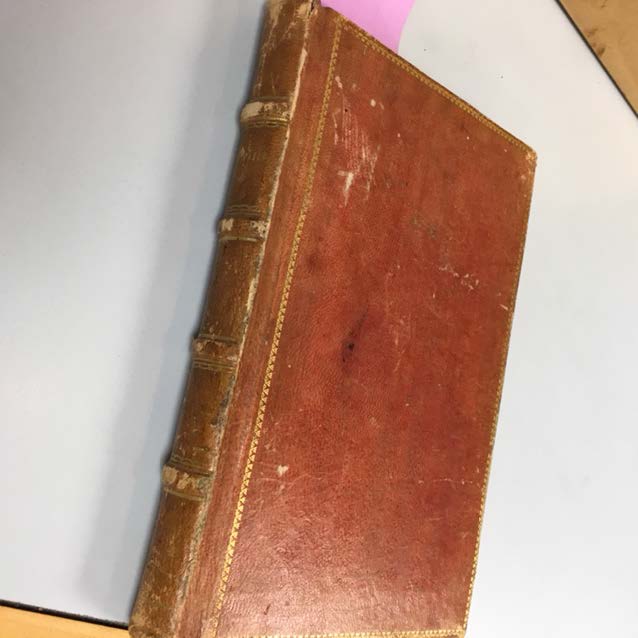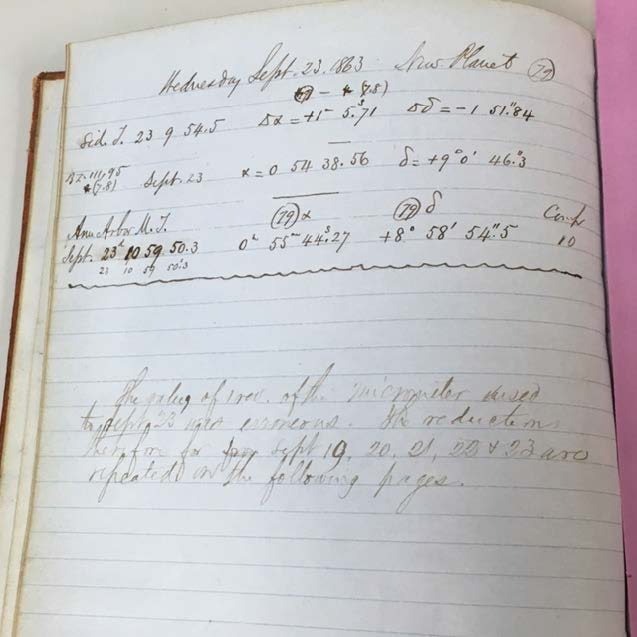This post is by Zachary Jahn



Watson appears to believe he found a new planet here.

format for a logbook page
Location of the Original:
The item was found at The Bentley Historical Library in Ann Arbor, Michigan.
To find this item one must:
- Request Box under collection of Michigan Historical Collections-Observatory
- The specific box is labeled: “Bimu Michigan, University. Observatory C455 Papers 1855-1976”
- To find the specific book inside the box, locate the back left portion of the box where there is a novel with a purple sticky note marking a page inside. The note reads “Watson New Planet”.
- To double check, the book itself is of brownish-red color and is marked by a brand name of “RECORL” in gold letters on the outside spine of the book.
Date: Logbook was dated to be from September 1863, used until June 1864. This conclusion was determined based on the dates physically written and recorded in the logbook.
Related Events: The logbook simply records the calculations and observations made by Watson in The Detroit Observatory from 1863 to 1864.
Historical significance:
This logbook, attributed to work by James Craig Watson, shows observations recorded from September 1863 to June 1864 while maintaining and utilizing The Detroit Observatory. This logbook then provides a key insight into the dealings and actions of the observatory director himself during a developing period of astronomical achievement. The logbook gives an indication as to how Watson made calculations and comparisons of various stars, planets, and comets in outer space. What is consistent in the logbook is Watson’s regular process of utilizing angles of elevation, right ascension and declination to make conclusions and estimates about various objects in space. Particularly striking was an instance where Watson indicates his belief that he discovered a new planet. This is significant because later research found Watson’s perceived ‘planets’ to be almost entirely asteroids. This logbook is a lens in to the lives of one of the most celebrated astronomical minds here at UM. Watson was influential in both his commitment to astronomy, and his direction as leader at the observatory. The logbook is a true testament to the dedication of astronomers like Watson during the earlier periods of scientific innovation and discovery here in Ann Arbor.


